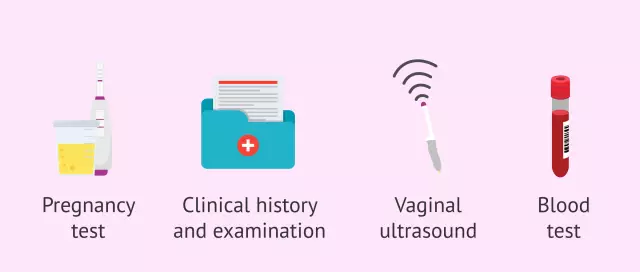- Author Rachel Wainwright [email protected].
- Public 2023-12-15 07:39.
- Last modified 2025-11-02 20:14.
Salpingitis
General characteristics of the disease

Salpingitis is a gynecological condition caused by inflammation of one or both fallopian tubes. With a combined inflammatory process in the fallopian tubes, ligaments and ovaries, the disease is called salpingo-oophoritis or adnexitis.
The development of salpingitis is most often provoked by a pathogenic bacterial infection. Infection, as a rule, is ascending: from the uterus into the fallopian tube, and only then into the ovaries or ligamentous apparatus.
The inflammatory exudate that accumulates during salpingitis leads to tissue scarring and partial or complete obstruction of the fallopian tubes. As a result of this pathological process, a woman can become infertile.
With acute salpingitis, purulent or serous cavities may form in a woman's fallopian tubes. They can cause an ovarian abscess, spread of infection into the peritoneum and provoke inflammation of the pelvic organs and interintestinal abscess.
Chronic salpingitis is one of the most common causes of female infertility. The chronic inflammatory process in the fallopian tubes is triggered by infections transmitted during intercourse: ureaplasma, chlamydia, mycoplasma, Trichomonas, etc. Possible sources of infection in chronic salpingitis are also contraceptive spirals, abortion, miscarriage, any diagnostic and therapeutic actions inside the uterus.
Salpingitis symptoms
The main symptoms of salpingitis at the initial stage of the disease are pain and urinary disorders. A woman with salpingitis symptoms feels a pulling pain in the lower abdomen and frequent false urge to urinate.
At the next stage of the disease, the appearance of profuse purulent vaginal secretion becomes a symptom of salpingitis. During intercourse, a woman experiences severe pain. Acute salpingitis is manifested by a sharp pain not only in the peritoneum, but also in the lumbar region. Symptoms of acute salpingitis also include high body temperature.
In chronic salpingitis, the temperature is subfebrile, and the pain syndrome is of low intensity. At the stage of chronic salpingitis, menstrual irregularities always develop.
Diagnostics of the salpingitis

Diagnosis of the disease is complicated by the similarity of symptoms of acute salpingitis with appendicitis or ectopic (ectopic) pregnancy. Sharp pain and muscle spasm often do not allow the doctor to obtain objective information about the patient's condition.
Typical symptoms of salpingitis on palpation during examination on a gynecological chair are cervical soreness and increased sensitivity of the appendages.
ESR indices in blood tests for purulent acute salpingitis> 15 mm / h, leukocytosis is observed above 10.5 thousand. Ultrasound confirms the presence of inflammatory processes in the fallopian tubes, and to identify the causative agent of salpingitis, it is necessary to use puncture of the fallopian tube or posterior fornix.
The laparoscopic method of sampling in acute salpingitis is the most informative. Its reliability is over 78%. However, due to the high cost and trauma of this method, it is used only in the most severe cases of acute salpingitis.
Salpingitis treatment
The tactics of treating salpingitis depends on the stage and nature of the course of the disease.
An early start of antibacterial treatment for acute salpingitis can achieve significant results as early as 7-10 days and prevent the degeneration of the disease into chronic salpingitis.
Self-treatment of salpingitis of any form is unacceptable. It can lead to irreversible organic changes in the fallopian tubes, to the need for surgery and to difficult-to-treat infertility.
Surgical treatment of salpingitis is used for tumors found in the fallopian tubes, whose structure is similar to a tumor. The use of surgical treatment of salpingitis is also necessary for adhesions in the fallopian tubes and a woman's desire to become pregnant or in the case of hydrosalpinx formation. The latter is an accumulation of fluid between the adhesions of the fallopian tube.

Most often in the surgical treatment of salpingitis, laparoscopic operations are used. Thanks to them, almost all pathologies of the fallopian tubes can be eliminated. Moreover, this type of operation does not provoke the formation of new adhesions, is less traumatic and aesthetic. With minilaparoscopic treatment of salpingitis on a woman's abdomen, only a few punctures are made.
During the operation, the tissue of the tube with adhesions is resected, the purulent secretion is removed, the walls of the fallopian tubes are disinfected, and drainage is installed.
After laparoscopic treatment of salpingitis, a woman can leave the hospital on the third day. The rehabilitation period lasts about 2 weeks. However, a woman is recommended to give up sex for a month and undergo a gynecological examination once every 3 months.
YouTube video related to the article:
The information is generalized and provided for informational purposes only. At the first sign of illness, see your doctor. Self-medication is hazardous to health!






